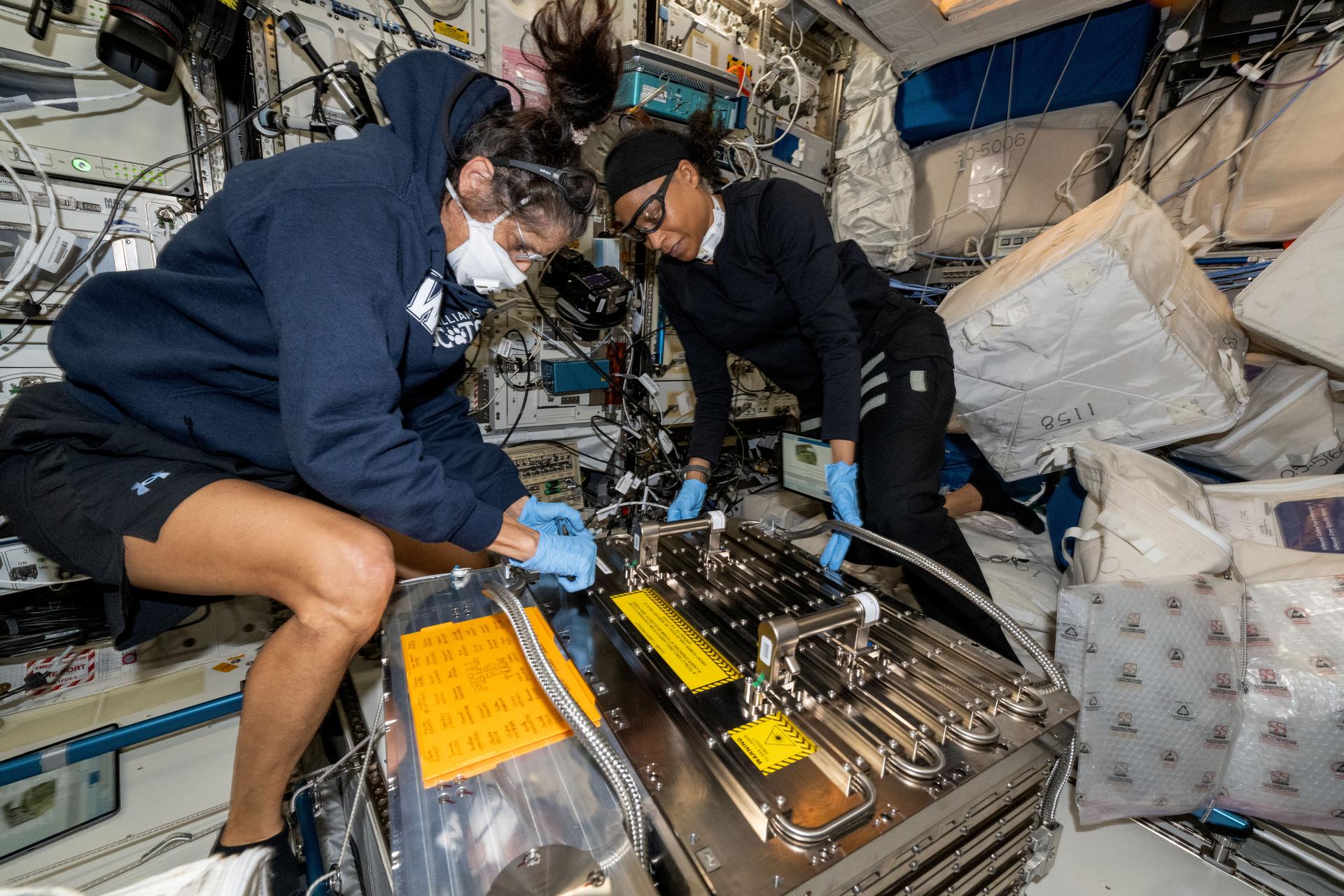Astronauts 3D-print first metal part while on ISS

ESA scientists have successfully demonstrated 3D printing of a metal part in space for the first time.
3D printing in space poses challenges, as many methods rely on gravity to position materials during the printing process. This is because when creating metal structures, molten metal is often used as part of the filament, or printable medium. In space, its behavior can be unpredictable, which can result in poor-quality objects, as the filament might shift or be placed incorrectly due to the lack of gravitational forces.
Scientists therefore had to adapt to work under these challenging conditions, and the International Space Station provided the perfect setting. ESA’s metal 3D printer uses a stainless steel wire melted by a powerful laser that reaches 2,192°F (1200°C) to create its molten metal filament that gets deposited layer-by-layer to build out a desired shape.
Through painstaking tests carried out over several months, the team was finally able to adjust the printer to its microgravity environment, producing the first metal part in space this August 2024. The team plans to print two more objects, then all three will be brought back to Earth for quality analysis and future planning.
Related: Future moon astronauts may 3D-print their supplies using lunar minerals
“With the printing of the first metal 3D shape in space, ESA Exploration teams have achieved a significant milestone in establishing in-orbit manufacturing capabilities. This accomplishment, made possible by an international and multidisciplinary team, paves the way for long-distance and long-duration missions where creating spare parts, construction components, and tools on demand will be essential,” said Daniel Neuenschwander, director of Human and Robotic Exploration at ESA, in a statement.

This groundbreaking technology continues to expand its applications on Earth, revolutionizing fields such as medicine, fashion, art, construction, food production and manufacturing. In space, as long-duration missions to the moon and potentially Mars take shape, astronauts will need a means of independently repairing or creating tools or parts for machinery or structures that would be difficult to carry onboard a spacecraft, which have limited capacity.
As the technology advances, it may even one day enable the printing of new tissues or organs, enhancing the ability to sustain long-term space exploration—though we’re still decades away from this being viable.
3D printers in space are nothing new, as microgravity offers an interesting environment for scientists to conduct experiments, develop better 3D printing materials, or create structures difficult to make on Earth. However, what’s significant about ESA’s recent announcement is that this is the first time a 3D printer has successfully produced a metal part.
This capability represents a major milestone as, until this point, metal components for space missions had to be produced on Earth and transported to orbit —a costly and complex part of any mission.
Source link



